Image to Image
- Massillon Museum

- Dec 3, 2020
- 15 min read
Image to Image: A Comparative Study of Past and Present Photojournalists' Images, Styles, and Shooting Techniques
Students enrolled in Professor Lee Horrisberger’s digital photojournalism course have examined the work of renowned photojournalists from the perspectives of artistic style, technique, and history.
Students used their phones and cameras to imitate the photography style, lighting, and content of photojournalists of their choosing.
The goal of the project was not only to demonstrate the impact that style and technique have on artistic content, but also to immerse the students in the historical and social context of the photojournalists’ work. Through this project students have gained a better understanding of how photography, specifically photojournalism, works within the larger social tapestry. The tradition of the exhibit continues this year in virtual format. In addition, students have added video links that explain in greater detail the challenges of capturing an image that emulates their chosen photojournalist’s style and technique.
This is the fourteenth annual exhibition of Walsh photojournalism students’ work in collaboration with the Massillon Museum. This exhibit enables college students and the general community to experience the artistic and social impact of photojournalism.
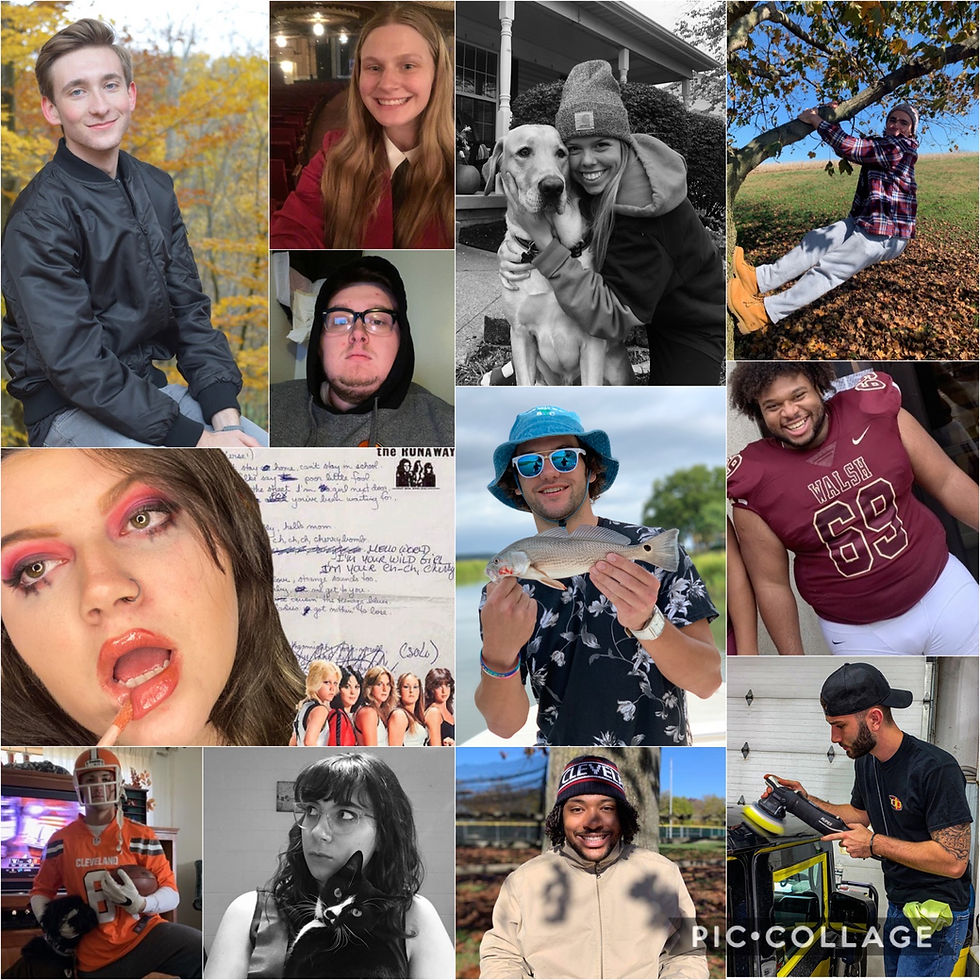
Class Picture
Left to right
Top Row: David Dzurilla, Hannah Reikowsky, Jared Walsh, Ellen Lawrence, Nicholas Chadwell
Middle Row: Makenna Hickey, Dylan Smith, Mychael Poole
Bottom Row: Kyle Burke, Rebecca Krymowski, Devin Kenerly, and Stone Kaufman

Hannah Reikowsky
Senior
Major: Sociology-Applied Family Studies; Communication
Minor: Gender Studies; Peace Studies
Mask Wearing While Working
Digital photograph
November 7, 2020
I chose to focus on pandemic photography. This photograph was based on an image included in the Bettmann Archive, started by Otto Bettmann. The photograph was taken during the Spanish flu pandemic. As we are amid a new pandemic in 2020, I wanted to showcase how wearing masks to slow or stop the spread is just as relevant now as it was one hundred years ago. My image was shot in the Global Learning Center located at Walsh University in North Canton, Ohio. The original image from 1918 was taken of a receptionist or operator. However, her outfit and the equipment she used were not like anything I had at my disposal. I chose to shoot my image from the side to highlight the student, Trinity Smith, sitting in front of a computer and keyboard while wearing her mask. I followed the rule of thirds to create an asymmetrical balance in the image. The lighting was also considered. The bright light was replicated in my image in a way similar to that of the original image.

View Hannah Reikowsky's video interview
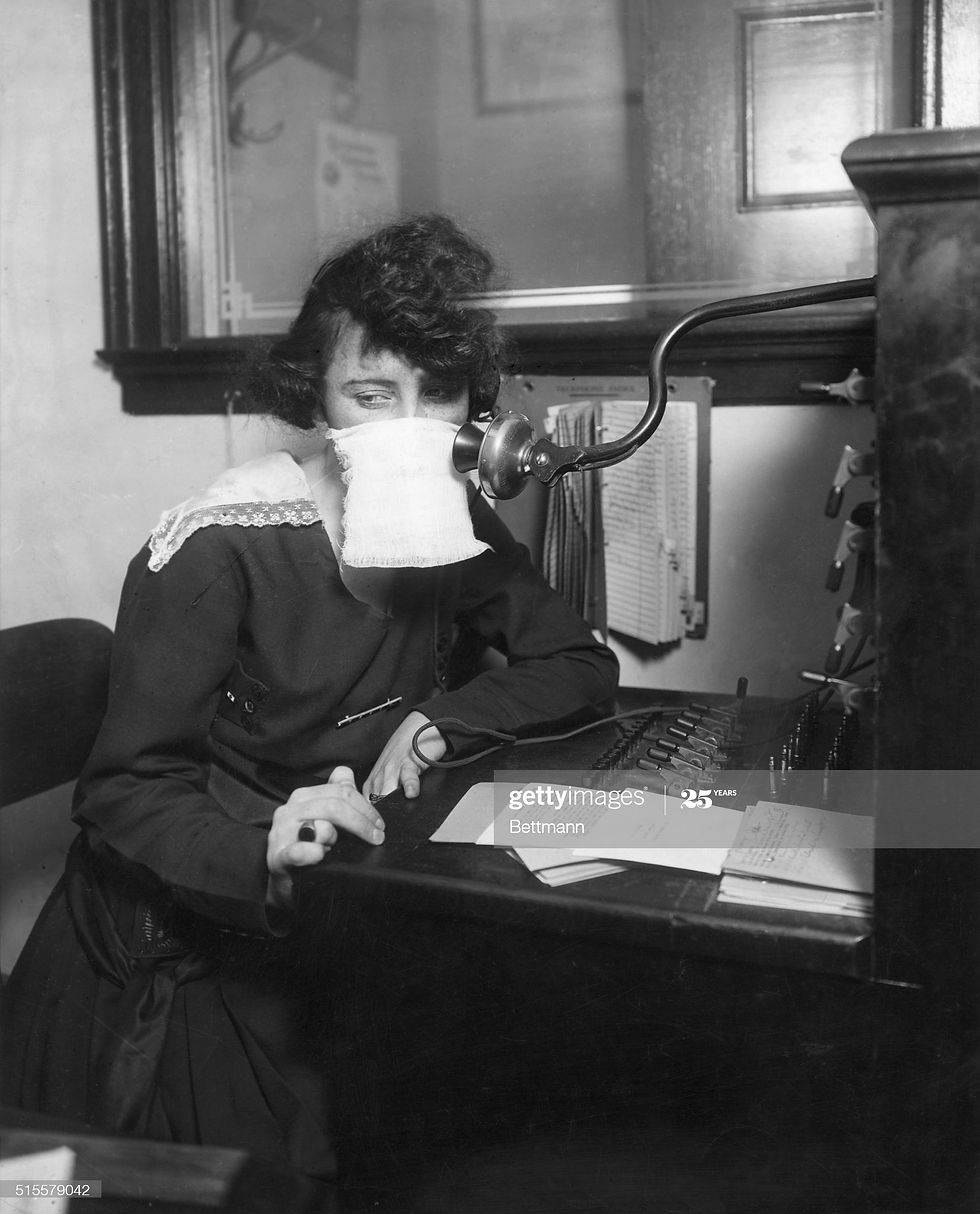
Otto Bettmann Archive
Telephone Operator With Mask
1918
Source: Getty Images
This photograph was included as one of the 1918 Spanish flu pandemic images in Otto Bettmann’s archive. The image was not taken by Bettmann, but the archive Bettmann created was able to compile thousands, and eventually millions, of images documenting history that might not have otherwise been recorded. The woman is wearing gauze over her mouth as a type of mask while she is at work. This image shows how a pandemic does not stop essential work. It is an example of ways in which individuals throughout history have adapted through mask wearing.
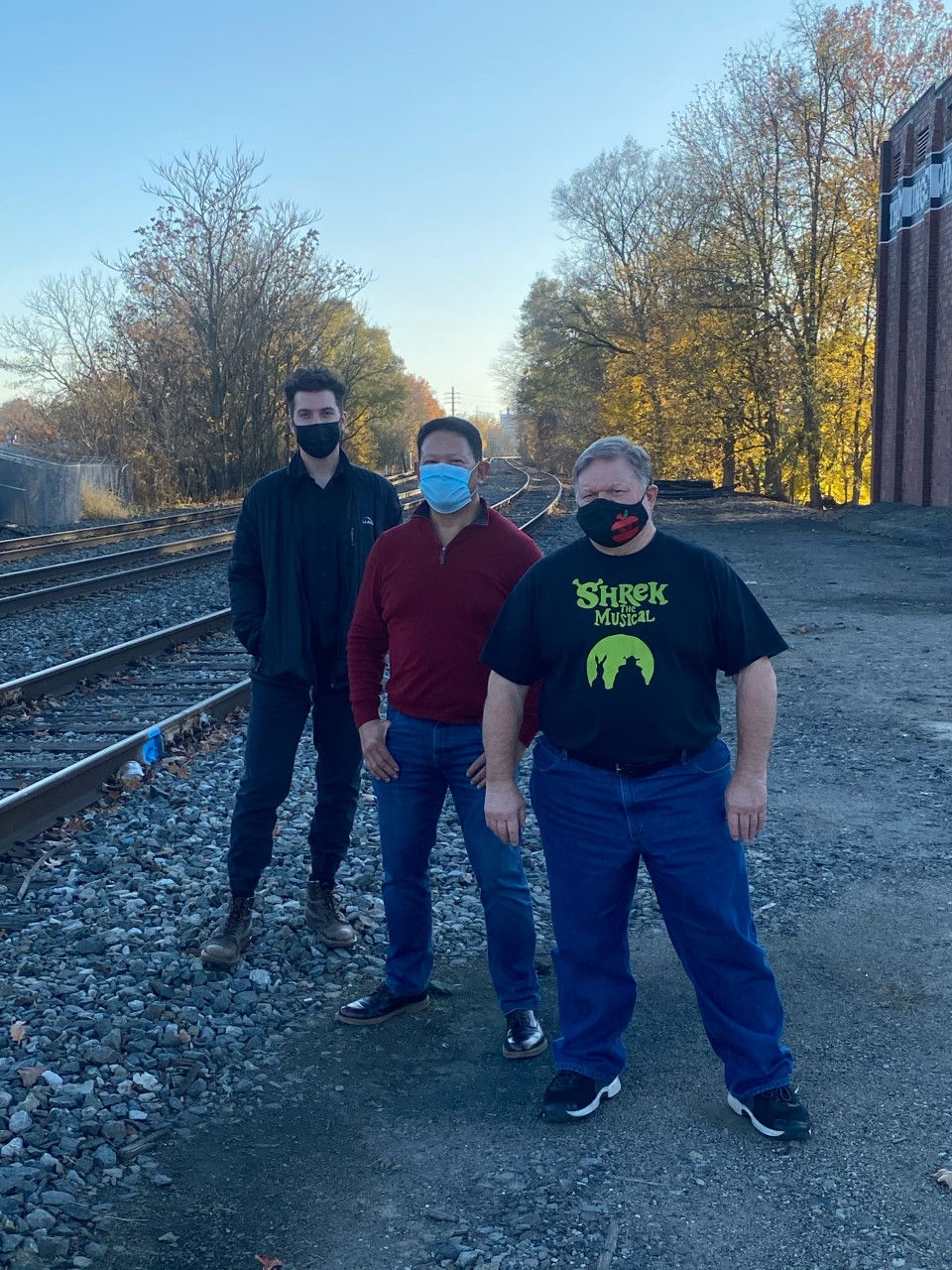
Hannah Reikowsky
Senior
Major: Sociology-Applied Family Studies; Communication
Minor: Gender Studies; Peace Studies
Tracks and Masks
Digital photograph
November 8, 2020
I chose to focus on pandemic photography. This photograph was based on an image by Raymond Coyne taken in California in 1918 during the Spanish flu pandemic. In light of COVID-19, I wanted to showcase how wearing masks to slow or stop the spread is just as relevant now as it was one hundred years ago. This image was shot in my hometown of Wooster, Ohio, next to railroad tracks near an old distillery downtown. The original image from 1918 included seven subjects and was taken in a different state with a different landscape from mine. I chose to shoot my image straight on to highlight the three individuals wearing masks (Joe Bruch, Todd Patterson, and Joe Villegas). I used cropping to focus on the subjects of the photograph, and to allow for simplicity in the image by blocking out some of the landscape. I also used diagonals to allow the tree line and the railroad tracks to lead a viewer’s eyes to the center, where the three men are pictured as my point of interest.

Raymond Coyne
A Group in Mill Valley in November, 1918
1918
Source: Mill Valley Public Library
This photograph was taken by Raymond Coyne in California in 1918 in the midst of the Spanish flu pandemic. Coyne took many photographs in Mill Valley, and this image documents individuals wearing masks. One is wearing a sign around their neck that states, “Wear a mask or go to jail.”

Rebecca Krymowski
Junior
Major: Graphic Design
Minors: Communication; Psychology
Good Boy on a Good Day
Digital photograph
November 7, 2020
Elliott Erwitt’s work stood out to me for many reasons, one being his frequent use of dogs as subjects. I was inspired to photograph my own dog, a yellow Labrador named Scout. We went outside and took a multitude of photographs at many different angles. With the beautiful lighting of the overhead sun and blue sky, when he naturally turned his head towards me, I knew I had found the perfect shot. I am satisfied knowing that the photo captures my dog as I see him: wise and serene.

View Rebecca Krymowski's video interview

Elliott Erwitt
France. St. Tropez
1979
Source: Johnson, M. M. (1994). Elliott Erwitt: To the dogs. Arts & Activities, 116(3), 33.
“Dogs are both an excuse and a reason for taking these pictures. They give me an excuse, because they make good subjects. I like them; people want to see them; I can’t resist….But the reason for any one of these pictures is the same reason for taking a picture of anything. These are pictures—not about dogs but about feelings, mood, graphics….Every one of my photographs of dogs is meant to be a photo, not dog pictures but dogs in pictures.” —Elliott Erwitt

Rebecca Krymowski
Junior
Major: Graphic Design
Minors: Communication; Psychology
End of Harvest
Digital photography
November 6, 2020
Living out in the country provides an abundance of photo opportunities, especially during the autumn months. I took advantage of this when I decided to roam my backyard in the late afternoon a few weeks ago. My attention was immediately caught by the sight of the sun beginning to set behind the cornfield neighboring my yard. Even though the lighting was already perfect thanks to the setting sun, I was met with an array of composition options. I had different angles, framing, and depth of field options from which to choose. With this in mind, I took a variety of shots.
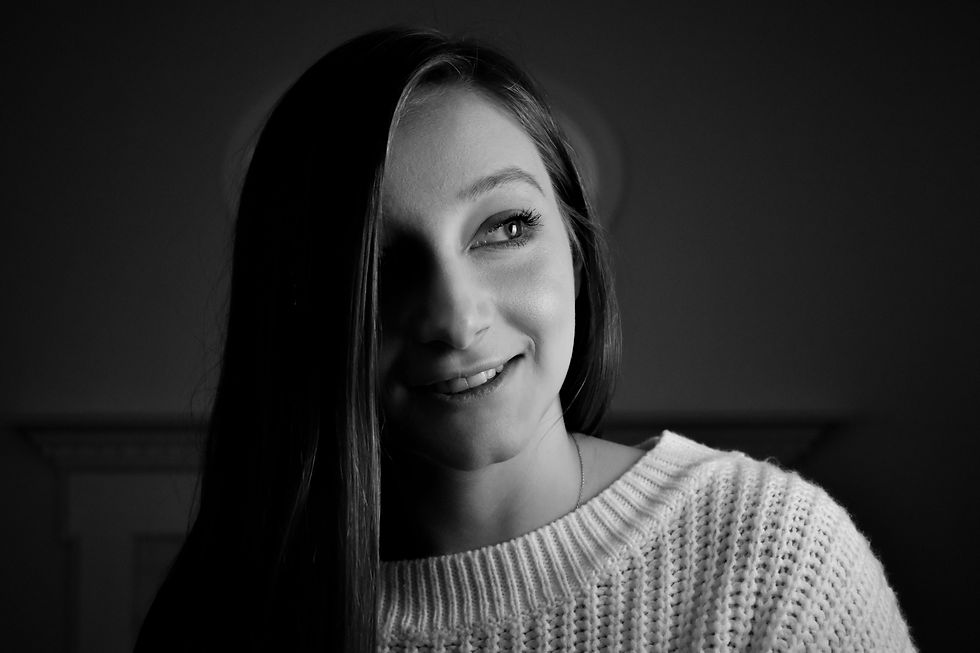
David Dzurilla
Sophomore
Major: Graphic Design
Minor: Marketing
Soft Light
Digital photograph
October 27, 2020
W. Eugene Smith was a master at using light to create visual interest in his photographs. The self-portrait shot by Smith that I used as inspiration for my photograph has harsh lighting and emotes a distressful feeling. I wanted to keep the same technique but communicate a softer feel. I photographed my friend Amelia in front of a plain background, next to a shaded lamp in order to have the same emphasis and lighting on her face. The shaded lamp produced a softer lighting effect, and Amelia’s face is more calm and joyful than Smith’s in his self-portrait. A struggle I faced when shooting included getting a strong focus on my subject. After a few adjustments on manual mode, I was able to get the shot. I brought it into Photoshop to adjust the lighting, and increased the contrast to imitate the effect of Smith’s portrait. Smith’s self-portrait gave me the opportunity to challenge myself by photographing a portrait, rather than the landscapes I typically photograph. I was pushed out of my comfort zone to photograph something new, and overall, I am extremely happy with the results.

View David Dzurilla's video interview
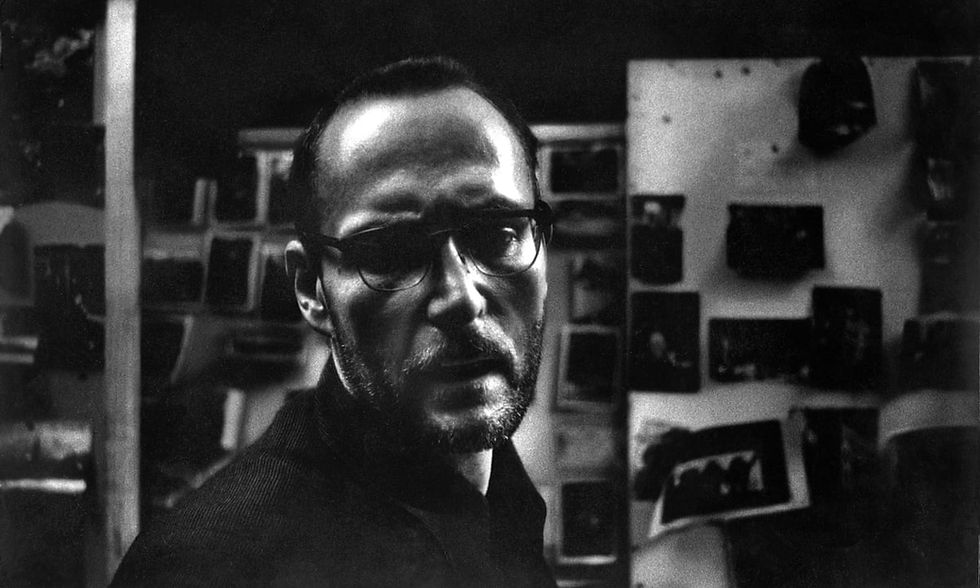
W. Eugene Smith
Self-Portrait, W. Eugene Smith, Croton-on-Hudson New York
1956
Source: Getty Images
Smith is often described as “The photographer who wanted to record everything.” He put great effort into his photographs, and viewers can see the results in his work. This photograph is a portrait of Smith against bulletin boards pinned with prints from his Pittsburgh Project taken in Croton-on-Hudson, New York, in 1956 and held by the Harold Feinstein Trust. This picture represents the distress in Smith’s life, due to his overuse of alcohol, and a long-term addiction to amphetamines. These addictions were fueled by his troubled past and lingering depression. The viewer can almost feel the emotion in his face through his use of light and the composition. As Smith himself said, “What use is having a great depth of field, if there is not an adequate depth of feeling?”

David Dzurilla
Sophomore
Major: Graphic Design
Minor: Marketing
Overtime
Digital photograph
October 23, 2020
My friend was driving through Pittsburgh trying to find a parking spot. We stopped at a red light and I had my window down, so I stuck my head out of the window with the camera. I angled my camera and shot upwards to achieve the unique perspective that can be seen in the photograph.

Nicholas Chadwell
Senior
Major: Communication
Minor: Philosophy; Film Studies
Country Harmony
Digital photograph
September 2, 2020
The significance of spending time with the harmony of nature is something that more people in America need to consider. When I went down to my friend’s house in Coshocton, Ohio, I had the perfect chance to do that. The huge valleys, vast fields of trees, grass, and corn, and the incredibly clear country sky were something I had never really experienced before. As my friend and I were driving, we pulled up over a small hill overlooking the massive cornfield behind one of my friend’s barns. He told me this area of the farm was one of his favorite places to go as a kid with his family when the sun would set, and he would look from left to right and just take in the grand view of the country. When I heard him say that, I thought of taking a panoramic photograph so I could capture what my friend sees every day at home. The lighting was great with the sunset just on the horizon; there was a clear view of the entire setting; and the oil jack was perfectly placed to give a beautiful and simple composition to the photo.

View Nicholas Chadwell's video interview

William Henry Jackson
From Photographs of the Yellowstone National Park and Views in Montana and Wyoming Territories, a bound album of 37 imperial size albumen prints mounted on decorative survey mounts with text printed on interleaving between each print.
1872
Source: Andrew Smith Gallery, LLC
William Henry Jackson was commissioned to document the western landscapes of America, specifically what is now known as the Yellowstone region. Jackson took an incredible amount of landscape photographs capturing the grand scale of the Yellowstone mountain ranges, valleys, woodland areas, and water sources. Having to carry over 300 pounds of equipment with a small crew of people, he hiked through some rough terrain to get to where he wanted to go. In addition, while Jackson’s purpose was to geologically survey the Yellowstone region, he also used his photographs to bring a case before Congress. This case was the first ever proposal for a “national park,” and for the first time in the history of the United States, Congress declared the Yellowstone region a national park. Not only did Jackson provide future generations with incredible photos of Yellowstone, he also ensured this beautiful natural landscape could be enjoyed by them and that the harmony of nature could be experienced by everyone.
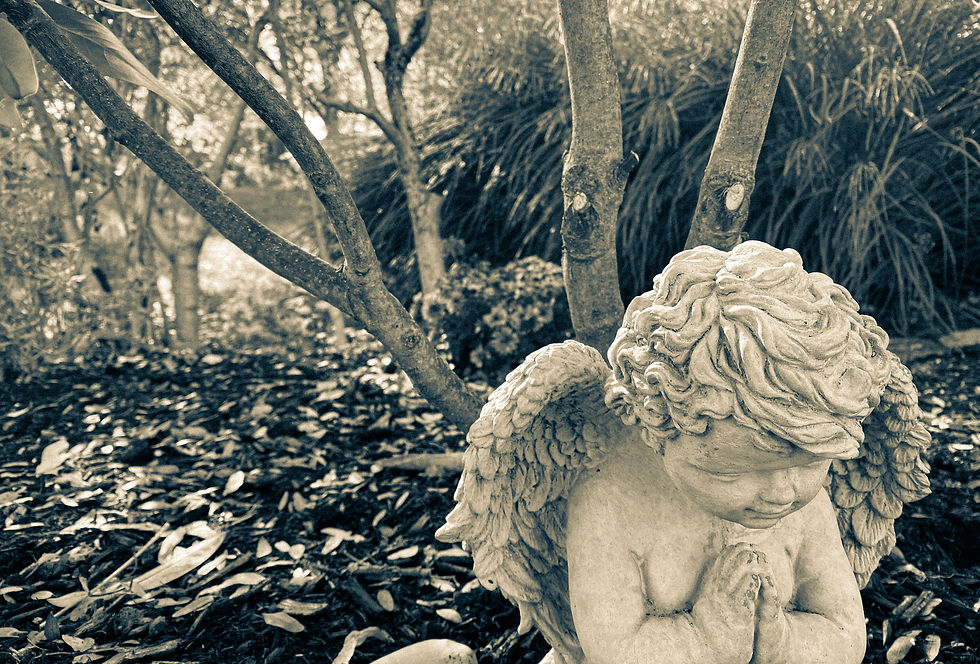
Stone Kaufman
Senior
Major: Corporate Communication
Minor: Marketing
Magnolia Peace
Digital photograph
October 22, 2020
When taking photos, I never want to purposely find the right angle or lighting. Whatever feels right in the moment is where I gather my true inspiration. With this photograph, the angel represents my grandfather who passed away in 2017. My creativity as a whole stems around his way of life and the joy he made of it. The magnolia tree was planted that same year, in remembrance of his strength and prosperity. This scene was fairly easy to shoot with midday light. About two feet off the ground, I was able capture the landscape. My inspiration photo was the Ruins of Old Church, photographed by Ansel Adams. His photograph inspired me with the use of black, white, and grey in many of his landscapes. One of the challenges I faced when taking this photograph was how much of the background I wanted to show. Cropping the image to the right size was important in trying to capture a focal point without leaving too much unwanted space in the background.

View Stone Kaufman's video interview
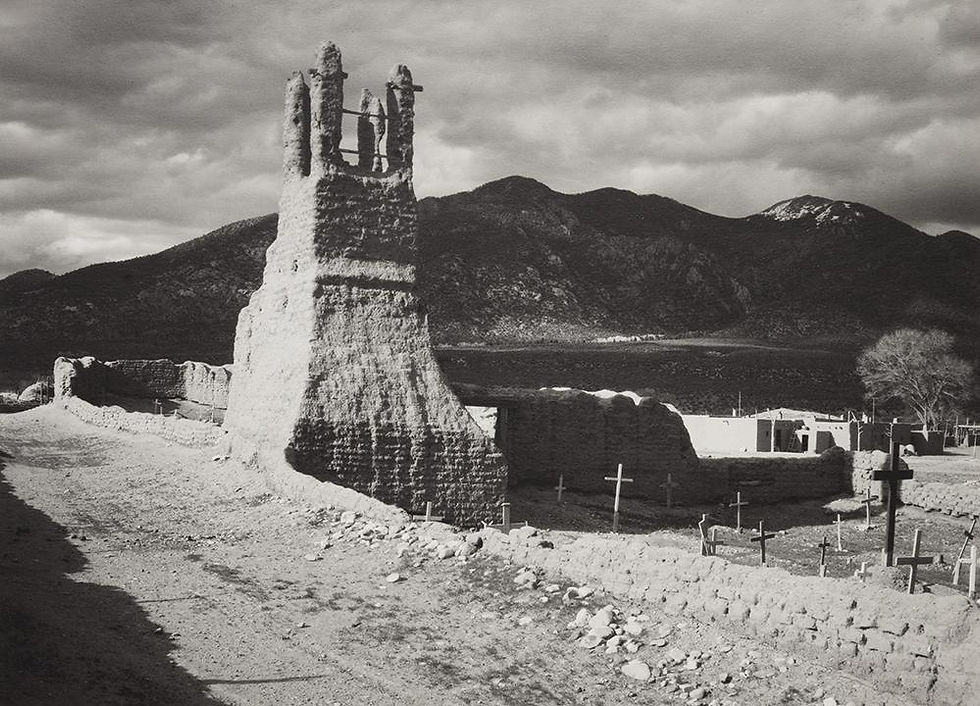
Ansel Adams
Ruins of Old Church
1929
Source: The Ansel Adams Gallery
Ansel Adams was a renowned landscape photographer who spent most of his career shooting a wide range landscapes for the National Park Service in the West. Adams’s love for photography grew when his parents gifted him his first camera at the age of fourteen. Ever since then, he spent most of his time in nature appreciating the environment. Ruins of Old Church depicts a wide landscape in the background, with a focus on the church and the crosses surrounding it. Adams’s image inspired me with its distinct black and white lighting. This image gives the viewer insight into the way Adams shot his work.

Stone Kaufman
Senior
Major: Corporate Communication
Minor: Marketing
Golden Days
Digital photograph
September 5, 2020
While enjoying a bright and beautiful afternoon, my golden retriever, Phoebie, wanted to smile for a picture. While we were relaxing on our back patio, I caught a perfect grin with bright contrast in the composition all around her. The greenery along with the blue accents gave this image just what it needed to reflect on how beautiful the day was. While editing the light and different hues through this image, it was important to note how much color can impact the mood of an image. She is truly a man’s best friend to me.

Stone Kaufman
Senior
Major: Corporate Communication
Minor: Marketing
Falling Benz
October 14, 2020
This image shows colorful change happening around us with the leaves falling. The contrast of colorful leaves on a white Mercedes Benz hood gives an overhead focal point to the world of natural weathering.

Mychael Poole
Senior
Major: Corporate Communication
Minor: Marketing
Home Sick
Digital photograph
November 13, 2020
I chose to duplicate James Nachtwey’s photograph, Kosovar Deportees Meeting in a Refugee Camp, because it caught my eye on a deeper level. When I looked at the photograph, I saw people who were separated from their family, and I am big on family. I really connected with the man in the foreground of the photo. There was just something about it that gave me a chill thinking about how separated he is from the world. One of the challenges I had taking this image was lighting. It was early in the morning when the sun was at its brightest, so I had a problem with keeping my shadow out of the photo. However, I am very satisfied with how it turned out.

View Mychael Poole's video interview

James Nachtwey
Kosovar Deportees Meeting in a Refugee Camp
1999
James Nachtwey took this photograph to show the world what was going on during the Kosovo War. He also focused on getting the word out about the political and social problems in the world. He said, “I have been a witness, and these pictures are my testimony. The events I have recorded should not be forgotten and must not be repeated.” Nachtwey has won numerous awards over the course of his career as a photojournalist. When I saw his picture, I connected with it immediately. I saw myself in his picture. That was the major reason that I took the photograph I did.
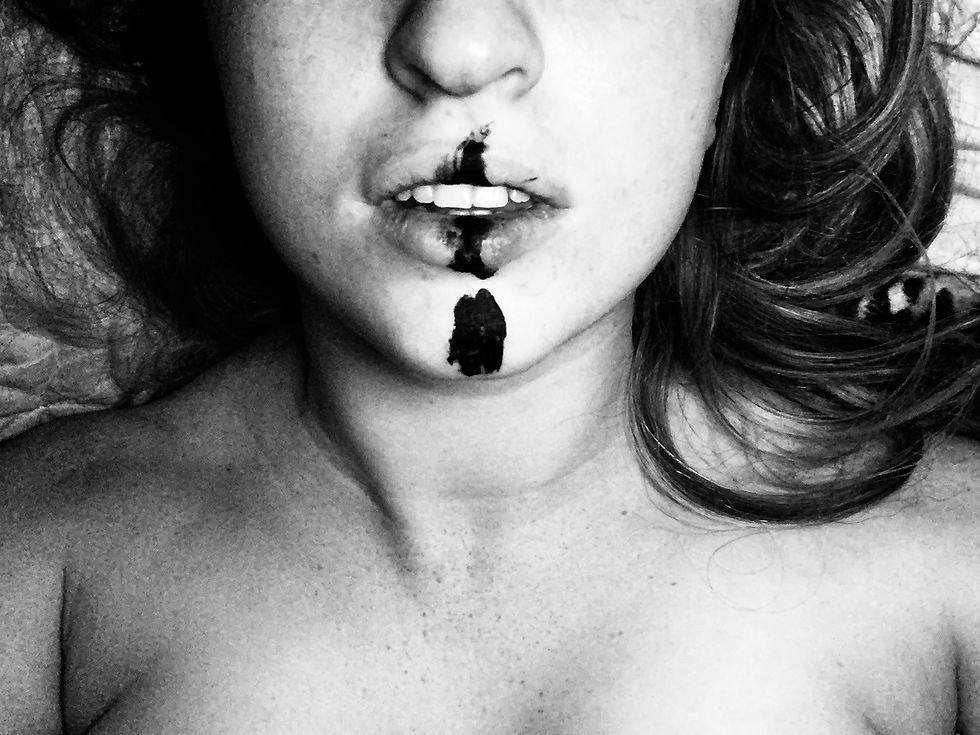
Makenna Hickey
Senior
Major: Corporate Communication Minor: Marketing
This Stays Between Us
Digital photograph
November 17, 2020
In the United States, we are free as people. Women have the freedom to act and speak as they wish. However, that is not the case in other countries. Shirin Neshat, an Iranian photographer born in the 1950s, has experienced firsthand the oppression that women face in Iran. She captured this on camera—and was exiled for doing so. Neshat came to the United States to continue educating others about the struggles of oppression through her powerful, high-contrast images. While the oppression is not quite the same, I believe there are still some issues that oppress women in our own country. In my photograph This Stays Between Us, I wanted to show the oppression that many women face in silence. Objectification, abuse, violence, and sexual assault are all things women face and are told to suppress. Even when these victims speak out, they are oftentimes not believed, and end up being blamed for the terrible things that happen to them. I wanted this photograph to emulate the silence these women face by having a black fingerprint stamped over the woman’s lips, as if to say, “Don’t tell anyone about this.”

View Makenna Hickey's video interview
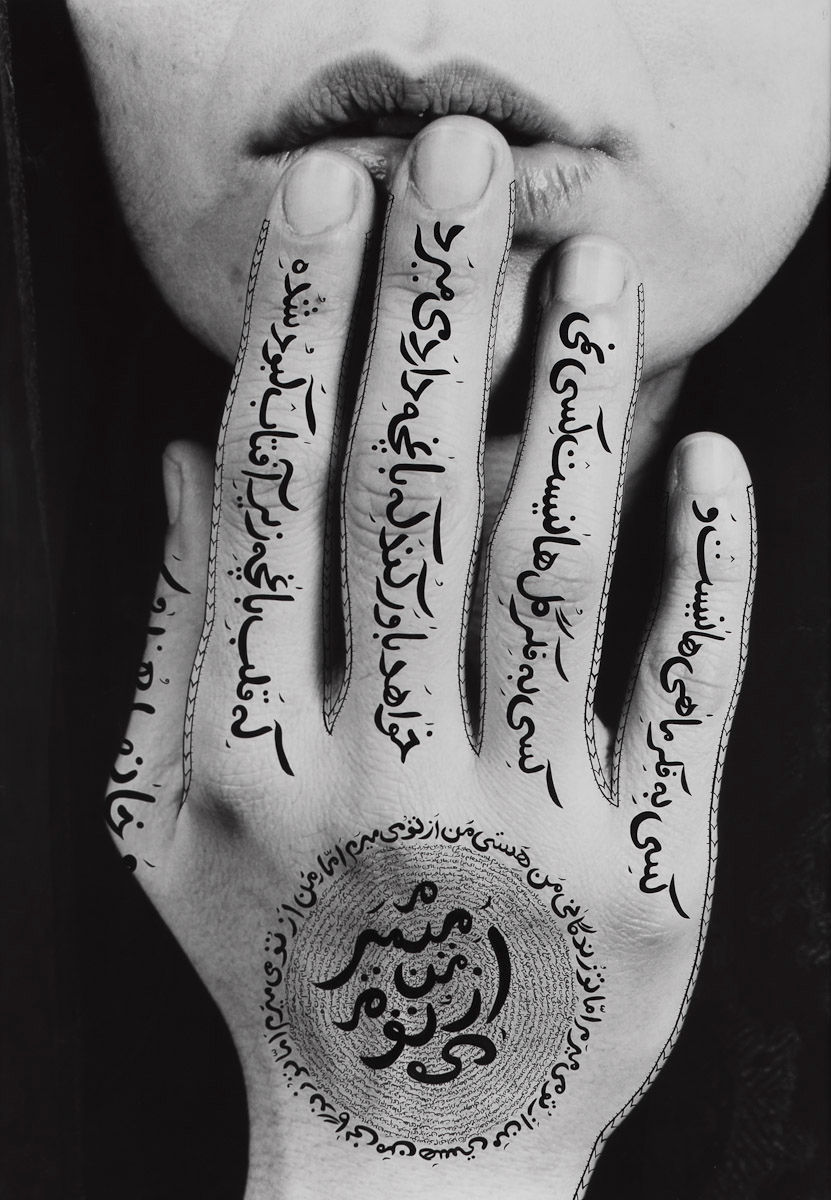
Shirin Neshat
Untitled
1996
Shirin Neshat. (n.d.). Retrieved November 19, 2020 Source: ArtNet
This image by Neshat was taken as part of her Women of Allah series. The photograph shows Neshat in the traditional Iranian veil. We can see her hand covering her mouth as if she is stopping herself from speaking and staying quiet. Her hand is covered in Iranian poetry that speaks about freedom. I found this image so powerful because there is a parallel in the United States where women are sometimes told not to talk out of turn or are encouraged to stay silent.

Ellen Lawrence
Junior
Major: Graphic Design
Minor: Marketing
Masked
Digital photograph
November 7, 2020
I wanted to take a portrait that would help illustrate the state of the world in which we are currently living. There were many challenges I struggled with when trying to get the perfect shot. The biggest challenge I encountered was trying to think of an idea that embodied the present time period. There are many current events that would be powerful to document. I chose the mask because it visually indicates that we are living in a global pandemic. It also is an interesting comparison between the figurative mask that Meryl Streep is trying to hide behind, and the literal mask that we must be behind to keep ourselves and others safe. Another challenge was trying to get the lighting right. I wanted the shadows on her face to reflect the dark time period we seem to be in right now, but the setting I was shooting in was not giving me the shadows I wanted. I later went into Photoshop and changed the photograph to black and white, to help bring out the shadows and convey the tone I wanted.

View Ellen Lawrence's video interview
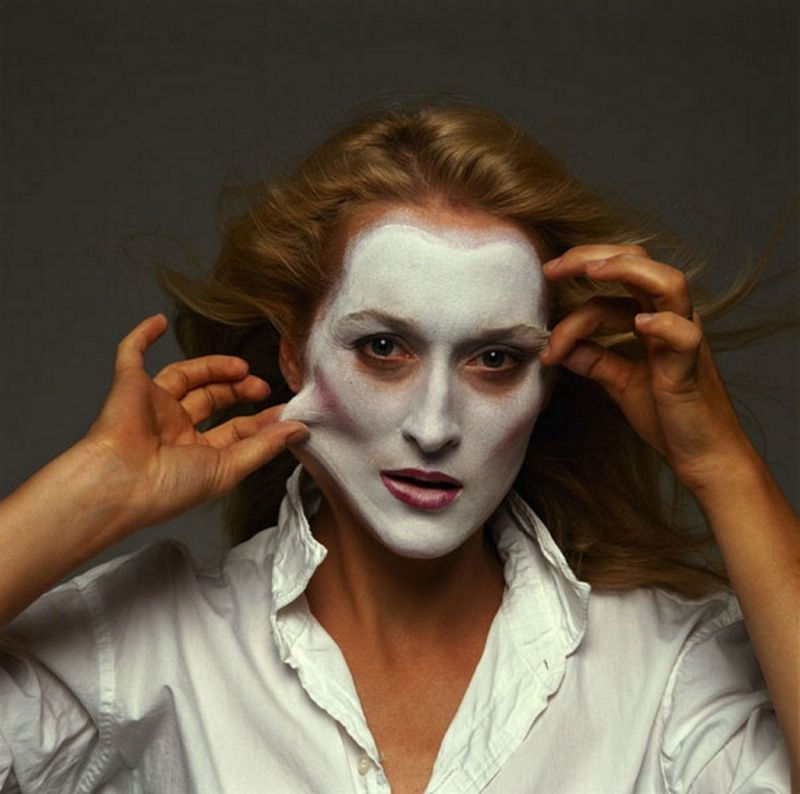
Annie Leibovitz
Meryl Streep
October 15, 1981
Source: Rolling Stone Magazine
Annie Leibovitz is a widely renowned photographer who is famous for capturing engaging portraits of celebrities. Leibovitz started her photography career in the 1970s and continues to produce photos that capture our fascination with the elite members of society. In the portrait of Meryl Streep, she is shown wearing a white mask and pulling at her face. Leibovitz says she remembers Streep saying she “wanted to disappear.” Living in the spotlight created a lot of anxiety, from the pressure of always having to perform. Streep is looking directly into the camera and wears a somber expression. The elements of the photograph and the way that it is composed create an extremely powerful image. I tried to capture the same emotion within my photograph, while reflecting a slightly different message.
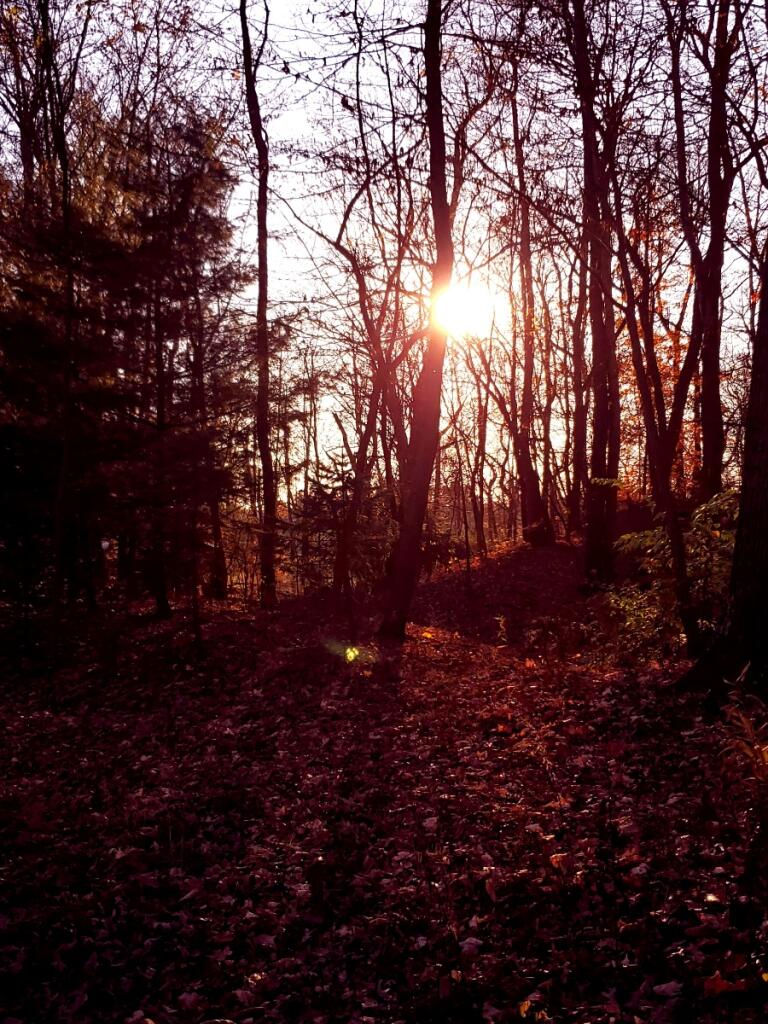
Jared Walsh
Senior
Major: Communication
Minor: Professional Writing
Into the Light
Digital photograph
November 8, 2020
I was inspired to recreate Marc Adamus’s photograph Under the Ferns because the viewer focuses on all the beauty of the green, while what stood out to me was the sunlight gleaming through the trees. The sunlight brings the scene to life. One challenge I faced was being able to recreate the color in the photograph due to our current season. Therefore, I wanted to focus more on recreating the light source that comes through the trees. Also, attempting to recreate Adamus’s style needs more work than just taking the picture. His ability to edit the photos, making them almost fake, brings out more of the beauty.

View Jared Walsh's video interview
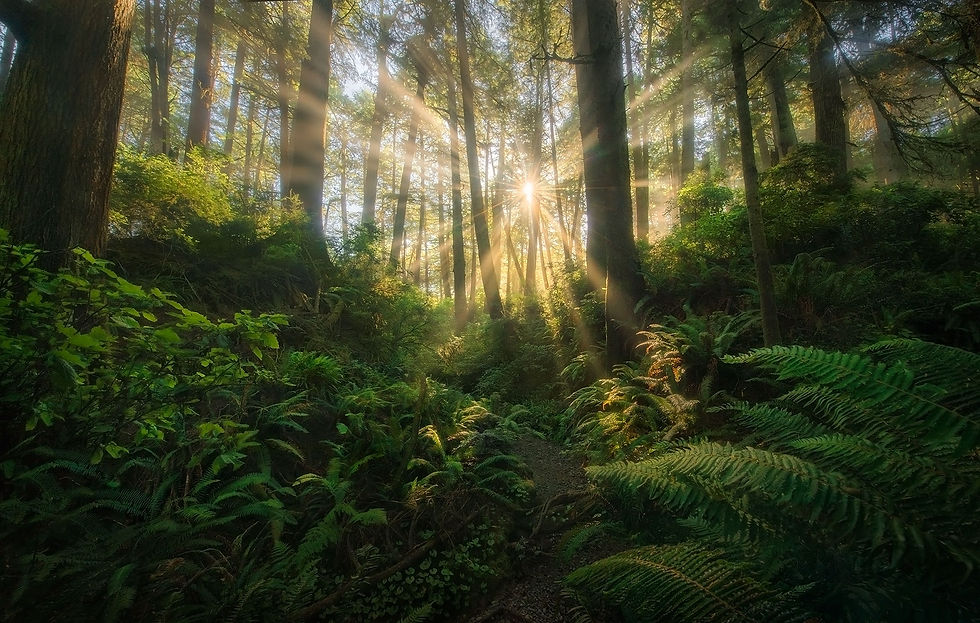
Marc Adamus
Under the Ferns (Olympic National Park, Washington)
2015
Source: Marc Adamus
Marc Adamus is a landscape photographer who has based most of his work in western North America. I found his ability to make nature ultrarealistic very inspiring. His talent allows him to bring out nature's beauty, seeming to create another world. His passion of wanting to create the very best shot possible is unlike many others. He spends weeks to months immersed in nature, which is what I find very inspiring.
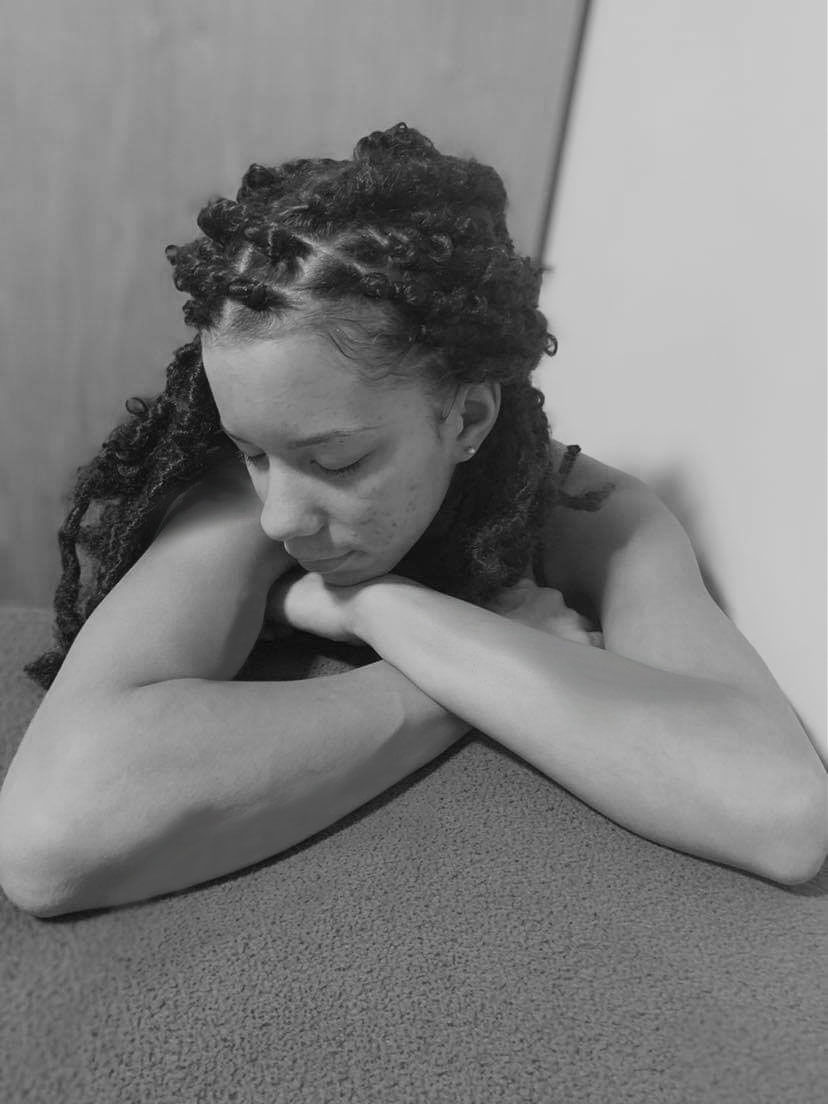
Devin Kenerly
Junior
Major: Graphic Design; Digital Media Communication
Offset
Digital photograph
November 6, 2020
Irving Penn’s image caught my eye because of the simplicity of the human body. I noticed the shadows move a viewer to look at the eyes, which is how I wanted to be viewed. I felt the imperfect balance makes the image resonate more. One of the challenges I ran into while capturing this picture was still making it light enough for the details to be visible, while keeping the picture dark. Despite this challenge, the result is something I can appreciate.

View Devin Kenerly's video interview

Irving Penn
Leontyne Price
November 6, 1961
Penn, I & Smithsonian American Art Museum (1961). Irving Penn: Leontyne Price.
Source: Phillips Auctioneers, LLC
Irving Penn was a photographer for Vogue for over sixty years. He had a gift for enjoying simplicity. The things that someone might not see in a person are what is beautiful, and can make for a great picture by using symmetry or the tools that highlight one aspect of an image. This photograph was taken to appreciate lighting and position. Irving states, “I can get obsessed by anything if I look at it long enough. That’s the curse of being a photographer.” This shows why people appreciate things they take the time to observe.
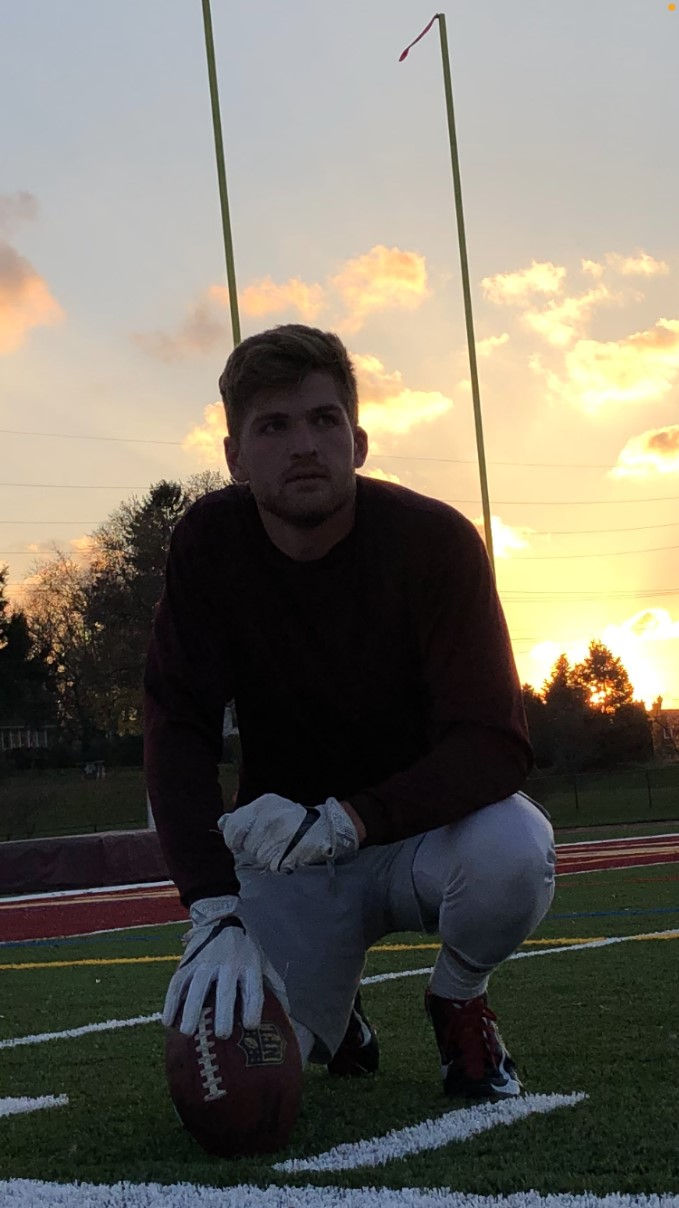
Kyle Burke
Senior
Major: Business
Minor: Marketing
Focused Enjoyment
November 13, 2020
When taking photographs, I try to incorporate things that I love or enjoy doing. My goal is to capture true emotion, feeling, and environment. Like with Steve McCurry’s work, the best photographs are spontaneous and irregular. I feel as if my self-portrait on artificial turf, exhausted after playing football with teammates, captures the things I enjoy doing. At the end of our time on the turf, we noticed the sky changed into a beautiful sunset and we really took it in. I felt how good life can be in the moment. We can be focused on having a great time playing a game we love, and then be rewarded with a hard workout and an awesome sunset.

View Kyle Burke's video interview

Steve McCurry
Rabari Shepherd, Rajasthan, India
2009
Source: Huxley-Parlour Gallery, London
This photograph captures Steve McCurry’s around-the-world theme. In a sense, he tried to capture feelings, settings, people, and events as they appeared naturally. The photo depicts an Indian nomad with a bright red headdress, a shepherd’s cane, gold earrings, groomed mustache, white garment, and two blurred animals walking behind him in the background. With this portrait, McCurry helps the viewer understand more about the nomad’s way of life as the man shepherds his livestock.
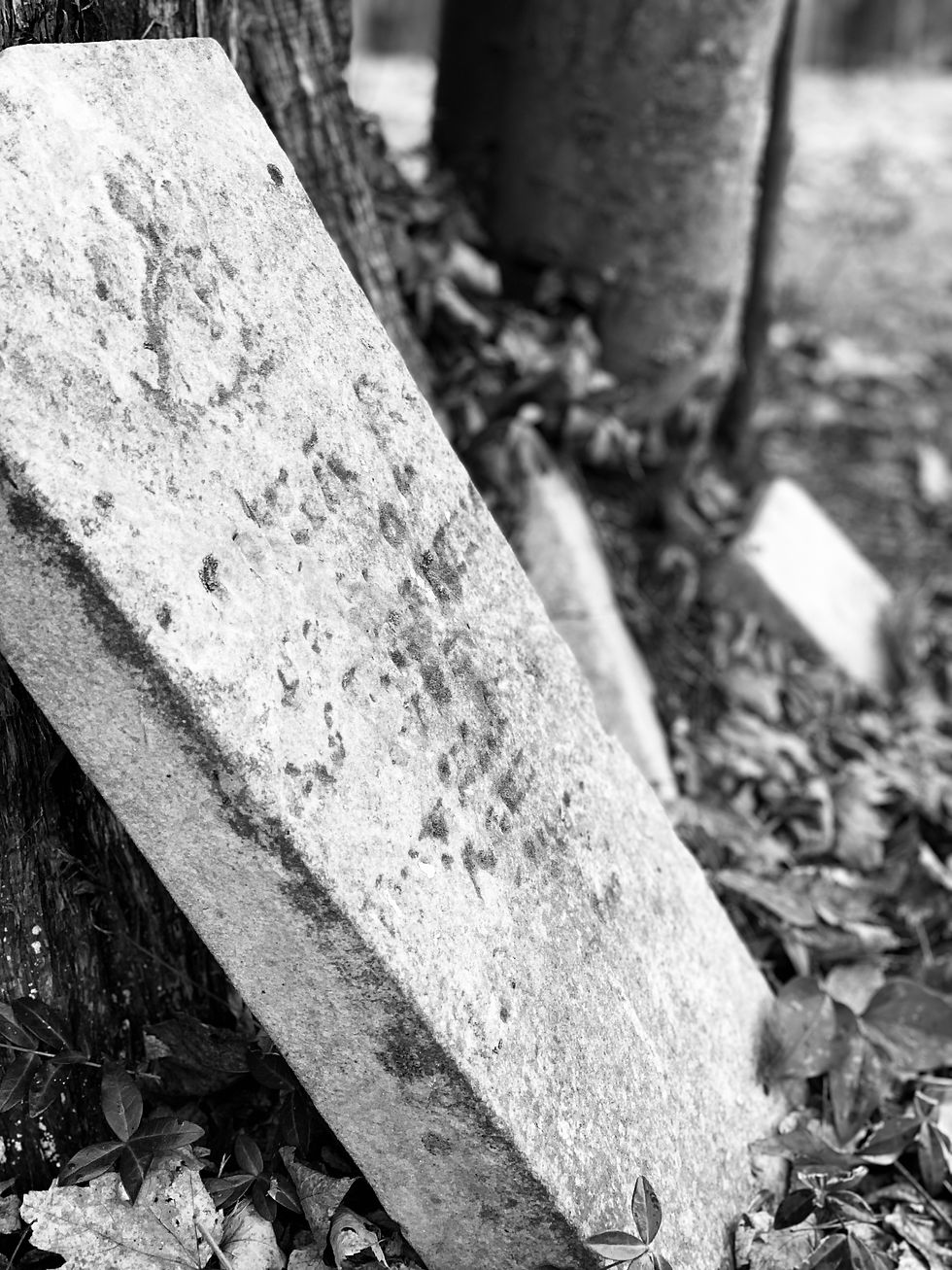
Dylan Smith
Senior
Major: Corporate Communication
Minor: Marketing
Leaning History
Digital photograph
November 15, 2020
When taking this photo, I tried to imagine a picture that could compare to Ansel Adams’s image called Roots, so I went to a place that contains history and beauty. There is a church near my secluded cabin in Hocking Hills, Ohio, and there is an old cemetery that has been there since the 1800s. I found emotional beauty within the old worn-out tombstones and I knew the image would be breathtaking, even in black and white. The tombstone, leaning against the tree, propped up for centuries, with its beautiful history, was destined to be my chosen image.
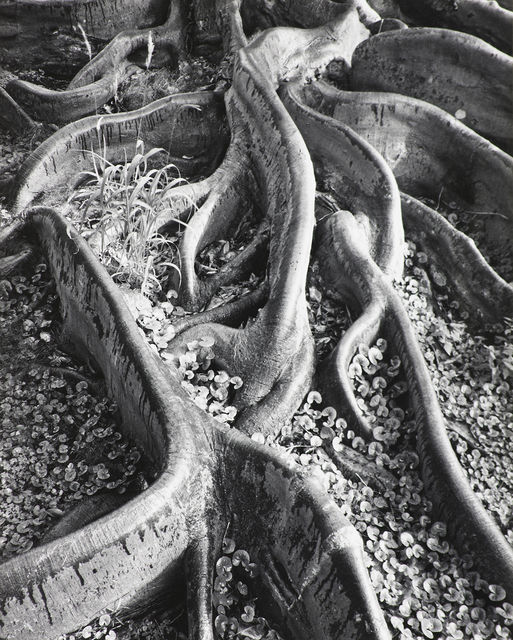
Ansel Adams
Roots
1948
Adams, A. (n.d.). Ansel Adams: Roots, Foster Garden, Honolulu, Hawaii (1948): Available for Sale. Retrieved November 16, 2020.
Source: The Ansel Adams Gallery
Ansel Adams took this image, with its natural beauty, back in 1948 in Honolulu, Hawaii. The curving roots show signs of hidden beauty under the shade of this tree. Adams has photographed many impactful images that are hidden deep within nature.
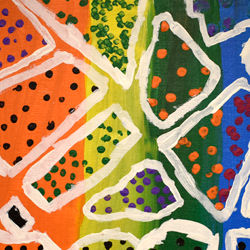

Comments